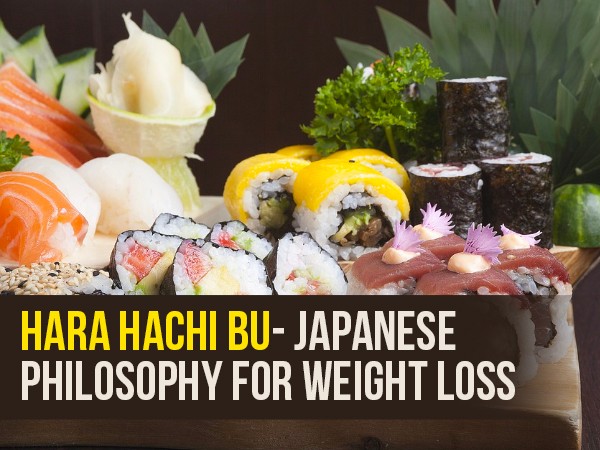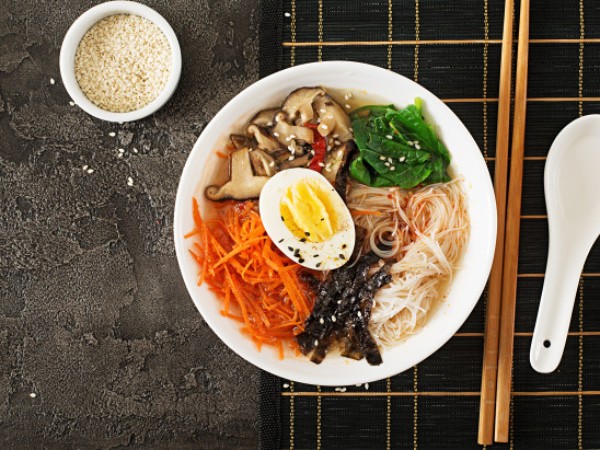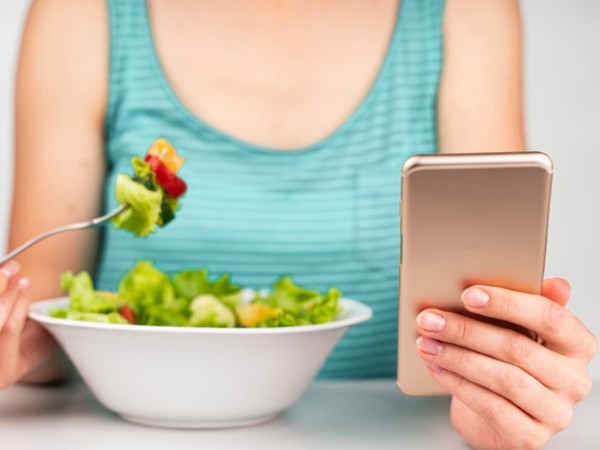Just In
- 1 hr ago

- 5 hrs ago

- 8 hrs ago

- 11 hrs ago

Don't Miss
- Sports
 PBKS vs MI Twitter Reaction: Fans go wild on Social Media as Hardik Pandya celebrates Rohit Sharma's One-Handed Six
PBKS vs MI Twitter Reaction: Fans go wild on Social Media as Hardik Pandya celebrates Rohit Sharma's One-Handed Six - Education
 Karnataka SSLC Result 2024 Soon, Know How to Check Through Website, SMS and Digilocker
Karnataka SSLC Result 2024 Soon, Know How to Check Through Website, SMS and Digilocker - Movies
 Masaba Gupta Expecting First Child With Hubby Satyadeep Misra; Neena Gupta Shares Excitement In VIRAL Post
Masaba Gupta Expecting First Child With Hubby Satyadeep Misra; Neena Gupta Shares Excitement In VIRAL Post - Finance
 7:1 Bonus, Rs 778.75/Sh Dividend In 20 Yrs: Infosys To Offer Massive Rewards, Up Next Rs 28/Sh Payout Soon
7:1 Bonus, Rs 778.75/Sh Dividend In 20 Yrs: Infosys To Offer Massive Rewards, Up Next Rs 28/Sh Payout Soon - News
 Social Media Users Laud Gujarat Titans' Fangirl, Call Her Ana de Armas' Lookalike
Social Media Users Laud Gujarat Titans' Fangirl, Call Her Ana de Armas' Lookalike - Technology
 Nothing Ear, Ear a With ANC, Up to 42.5 Hours of Battery Launched; Check Price and Availability
Nothing Ear, Ear a With ANC, Up to 42.5 Hours of Battery Launched; Check Price and Availability - Automobiles
 All About Electronic Stability Control ESC: Working & Advantages
All About Electronic Stability Control ESC: Working & Advantages - Travel
Telangana's Waterfall: A Serene Escape Into Nature's Marvels
Hara Hachi Bu – The Japanese Diet Rule For Longevity, Youthfulness And Weight Loss
Hara Hachi bu has been touted as the secret to longevity, ideal weight management and anti-ageing effects. It also helps in avoiding digestive issues such as gastrointestinal problems, acid reflux, flatulence and bloating by keeping a check on overeating.

So what is Hara Hachi Bu? Is it a magic spell, one that opens doors to good health?
It's no Magic spell; it's the Japanese food philosophy that originated in Okinawa, Japan. Hara Hachi Bun Me (腹八分目), or Hara Hachi Bu, and sometimes misspelt Hara Hachi Bu) is a Confucian teaching that instructs people to eat until they are 80 per cent full. Roughly, in English, the Japanese phrase translates to, "Eat until you are eight parts (out of ten) full" or "belly 80 per cent full". Interestingly, a similar principle also appears in Ayurvedic medicine, dating back to the 4th century BCE, where "you should fill one-third of the stomach with liquid, another third with food, and leave the rest empty."
When we leave sufficient space in the stomach after finishing a meal, we allow the food to move and mix with the stomach acids efficiently. This, in turn, enhances the digestion process and leads to efficient absorption of the food and renders the nutrients more available to the body. When the stomach remains slightly empty, the food or the acid does not return to the food pipe, thus addressing the acid reflux issue [1].

To ensure that we are keeping our stomach 20 per cent empty, we need to be aware and eat mindfully [2].
- Having a meal with gadgets will not allow communication between the stomach and the brain. Thus we would end up eating more than is required.
- Chewing every morsel well enough and eating slowly ensures satiety. This also allows the stomach to instruct the brain to stop eating. Ideally, the eating process should last for 15-20 minutes with no distraction.
- Eat in smaller plates and bowls and take half the quantity of food that you would otherwise consume. For the second serving, take half of what you would have taken again and eat that slowly and chew thoroughly. In most probabilities, you would not feel the urge to eat more.
Thus, you consciously leave space in the stomach for the last chapati or the last serving of rice. And never fill the stomach to the brim.
Along with the Hara Hachi bu philosophy, the Okinawa diet is known to be low in calories and has a low glycemic load. The Okinawa residents consume about 1,800 to 1,900 kilocalories per day. Their elders' typical body mass index (BMI) is about 18 to 22, compared to an average BMI of 26 or 27 for adults over 60 in the United States. Okinawa has the world's highest proportion of centenarians; people aged over 100 years [3].
Listed here are some specific foods that the Okinawa diet includes and how we Indians can incorporate this in our meals along with the Hara Hachi Bu philosophy:
- The Okinawa diet includes Vitamin C rich foods that are high in polyphenol, thus having high antioxidant functions. Indians can include lemons, Indian gooseberry, dark coloured fruits and vegetables, citrus fruits in their diet to get a similar effect [4].
- The foods available in Okinawa are a great source of dietary fibre and potassium. An average person eats 300 grams of vegetables per day. Indians can replicate this philosophy by having vegetables with every meal and including raw salad vegetables in meals. We can add vegetables in the lentils we prepare.
- The Older population in Okinawa eats more vegetables than the younger generations. This is true across the globe as the older population are unable to digest the heavy lentils and legumes. Lighter vegetables are sattvic in nature and are digested easily [5].
- Their diet is rich in soybeans and flax, which is a source of phytoestrogens that slows the bone loss that comes with menopause. Indian diet should include seeds like pumpkin, flax, sesame and sunflower that are an excellent source of Omega 3 fatty acids and calcium.
The Okinawan people have been following the Hara Hachi Bu philosophy along with a balanced plant dominated diet. The benefits of such a lifestyle have been immense [6].
- The elderly have young, clean arteries, low cholesterol, and low homocysteine levels when compared to Westerners.
- They have low blood levels of free radicals.
- They are at 80 per cent less risk from coronary heart disease and stroke levels.
- Okinawan centenarians have been lean throughout with an average body mass index (BMI) of 18 to 22.
- They can be seen on motorcycles and climbing mountains, gardening and mowing the lawns. At 100, most of them do not think of retirement.

On A Final Note...
There are some rules for a healthy and longer lifespan. These are not difficult but very effective [7][8].
- Make low-intensity physical activity part of your daily routine.
- Build good relationships with friends and family.
- Eat a diet lighter on meat and excess calories and heavier on plants.
- Find a purpose for and sense of meaning in your life.
The Zen priest "Hakun Yasutami" in his book "The three pillars of zen" states that "eight parts of a full stomach sustain the man; the other two sustain the doctor."
-
 healthExclusive: New Year 2024: Let's Understand The Value Of Nutrition Resolution And Set Realistic Goals!
healthExclusive: New Year 2024: Let's Understand The Value Of Nutrition Resolution And Set Realistic Goals! -
 healthChristmas 2023: Healthy Christmas Feast To Enjoy Without Derailing Your Diet
healthChristmas 2023: Healthy Christmas Feast To Enjoy Without Derailing Your Diet -
 healthWhat Would Happen To Your Body If You Give Up Non-vegetarian Food For A Month?
healthWhat Would Happen To Your Body If You Give Up Non-vegetarian Food For A Month? -
 healthFrom Seeds to Nuts: The Must-Have Foods in a Fertility-Enhancing Diet for Men
healthFrom Seeds to Nuts: The Must-Have Foods in a Fertility-Enhancing Diet for Men -
 pregnancy parentingWhat Are The 4 Must Have Vitamins For Kids With Diabetes?
pregnancy parentingWhat Are The 4 Must Have Vitamins For Kids With Diabetes? -
 wellness5 Reasons Why You Might Want To Think Twice Before Embracing A Juice Cleanse
wellness5 Reasons Why You Might Want To Think Twice Before Embracing A Juice Cleanse -
 insyncCulinary Surprises: 4 Indian Dishes That Aren't Actually Indian!
insyncCulinary Surprises: 4 Indian Dishes That Aren't Actually Indian! -
 healthDid You Know These 4 Foods Taste Exactly Like Cola?!
healthDid You Know These 4 Foods Taste Exactly Like Cola?! -
 healthDoes This Everyday Cooking Ingredient Trigger Diabetes?
healthDoes This Everyday Cooking Ingredient Trigger Diabetes? -
 healthPesticides In Food Reducing Sperm Count: Is Your Food Pesticide-Ridden?
healthPesticides In Food Reducing Sperm Count: Is Your Food Pesticide-Ridden? -
 healthSinger Shakira Loves These 2 Indian Sweets! How To Make It Diet-Friendly?
healthSinger Shakira Loves These 2 Indian Sweets! How To Make It Diet-Friendly? -
 healthAntimicrobial Awareness Week: Do Any Foods Have Antibiotic/Antimicrobial Properties?
healthAntimicrobial Awareness Week: Do Any Foods Have Antibiotic/Antimicrobial Properties?


 Click it and Unblock the Notifications
Click it and Unblock the Notifications



